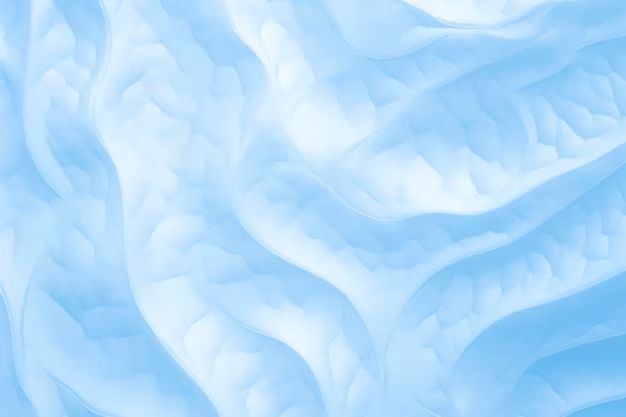Light blue is a soft, calming shade that evokes feelings of tranquility, relaxation, and openness. It has long been associated with airiness, clarity, and refreshment. In aesthetics and color psychology, light blue can represent different moods, atmospheres, and design styles. The specific aesthetics associated with light blue depend on factors like hue, tone, and application.
Serene and Ethereal Aesthetic
One of the most common aesthetics associated with light blue is an ethereal, peaceful, serene look and feel. Light or sky blue evokes clarity, open spaces, and a sense of freedom and escape. It gives off an airy, cloud-like vibe. In interior design, light blue is associated with airy, minimalist spaces that feel open and breathable. It creates a relaxing atmosphere, sometimes with spiritual or mystical undertones.
Light blue is commonly used in bedroom, bathroom, and spa designs to create a peaceful sanctuary-like environment. It has an innately gentle, soothing energy. Light blue is also popular for nurseries, suggesting tranquility, sweet dreams, and new beginnings. Overall, light blue has an angelic, heavenly aesthetic.
Nautical and Beachy Aesthetic
Alongside airy ethereality, light blue also conjures up imagery of the sky and sea. It has strong associations with the nautical world – think cloudless skies, calm waters, and endless horizons. Light blue evokes a casual, coastal, beachy aesthetic.
In fashion and interior design, light blue suggests laidback coastal living. It’s the color of sun-washed boating stripes, weathered beach wood, whitewashed cottage walls, and tranquil seaside vistas. Light blue clothing has a breezy, resort-style look. Its nautical aesthetic comes across as fresh, cheerful, and leisurely.
Vintage and Retro Aesthetic
Certain hues of light blue also conjure up vintage aesthetics. Pastel blue with grey undertones has an aged, faded look reminscent of timeworn painted wood and old photographs. This muted blue recalls country cottages, worn farmhouse tables, and antique delicate lace.
In 1950s and 60s retro design, powder blue was hugely popular for kitchen appliances, cars, architecture, and household goods. This very soft, pale blue has a classic yet dated look. It evokes midcentury nostalgia and old-school Americana. Powder blue gives a subtle retro flair.
Masculine Aesthetic
While often seen as delicate and feminine, some shades of light blue can also project a bold, masculine aesthetic. Bright sky blue, French blue, and navy blue lean more robust than pastel hues. Against black or paired with wood accents, these tones feel grounded and sturdy.
Crisp light blues work well in men’s fashion, evoking reliability and trust. They have an authoritative yet non-threatening energy. In industrial and corporate spaces, light blue reads as professional and dependable. It has a clean, competent vibe compared to emotional or mysterious darker blues.
Minimalist Aesthetic
Clean, airy light blues lend themselves perfectly to minimalist aesthetics in art and design. Their lightweight look embodies the idea of open space, clarity, and intentional simplicity. Light blue makes an excellent minimalist color – it recedes gently without disappearing.
In home decor, light blue upholstery, walls, and accessories complement sparse, uncluttered rooms. The minimalist aesthetic relies on plenty of breathing room, which light blue’s open feel enhances. Unfussy, quiet, and restrained, light blue works magic in pared-down, modern interiors and art.
How Different Hues Influence the Look and Feel of Light Blue
While sharing some common traits, specific shades of light blue give off distinct moods and aesthetics. Here’s an overview of how hue variations impact the overall look:
| Hue | Aesthetic and Feel |
|---|---|
| Baby Blue | Delicate, sweet, innocent |
| Sky Blue | Airiness, clarity, escapism |
| Powder Blue | Vintage, faded, delicate |
| Periwinkle Blue | Whimsical, dreamy, poetic |
| Ice Blue | Crisp, clean, refreshed |
| Aqua Blue | Rejuvenating, tropical, vibrant |
| French Blue | Sophisticated, Parisian, romantic |
| Navy Blue | Grounded, bold, authoritative |
Combining Light Blue for Maximum Aesthetic Impact
On its own, light blue makes a soothing, ethereal statement. But combining it with other colors can heighten its aesthetic impact. Here are effective ways to use light blue in color palettes:
– Complement with neutrals like white, beige, gray for airy, relaxed look
– Pair with pastels like pink, yellow, lilac for a sweet, whimsical effect
– Contrast with black or brown for more stable, grounded vibes
– Add navy blue for classic, nautical style
– Mix with turquoise, seafoam for oceanic, tropical aesthetic
– Blend with purples, lavender for a romantic, cottagecore look
– Join with corals, peach for a youthful, cheerful ambiance
– Team with greens and plants for an earthy tranquility
– Garnish with silver, chrome for more ethereal, cool tones
Key Industries and Brands That Use Light Blue
Many industries lean on light blue to convey certain atmospheres and styles. Here are some key sectors and brands that utilize light blue effectively:
Technology – LinkedIn, Twitter, HP, Dell, Intel
Healthcare – Johnson & Johnson, Pfizer, Bayer, P&G, Clorox
Finance – American Express, PayPal, JP Morgan, Visa
Aviation/Travel – FedEx, American Airlines, Delta, United Airlines
Sportswear – Under Armour, Adidas, New Balance, Fila
Denim – Levi’s, Wrangler, Lee, Guess, Calvin Klein
Retail – Ikea, Zara, IKEA, Kohl’s, Ralph Lauren
Conclusion
In summary, light blue is associated with a diverse range of moods and aesthetics. At its core, it conveys openness, clarity, and tranquility. Specific hues, tones, and color combinations result in looks ranging from heavenly to vintage to nautical. Across industries, light blue projects professionalism with approachability. Whatever the exact nuance, light blue universally refreshes.


